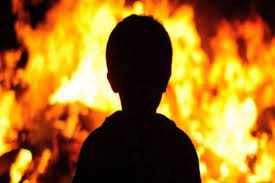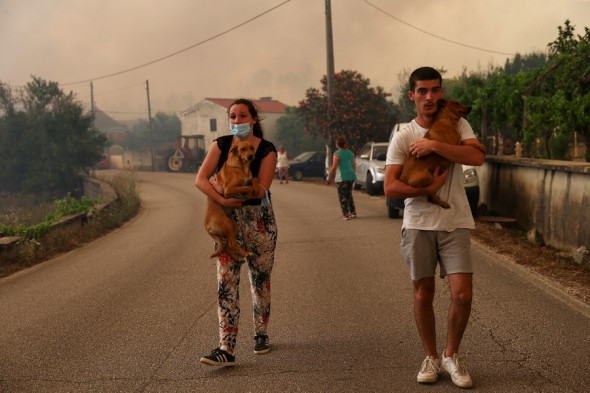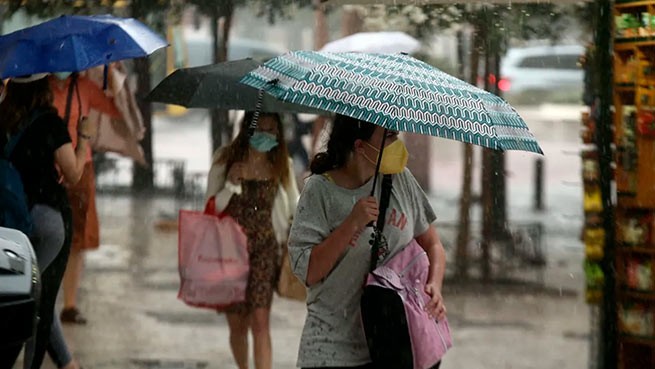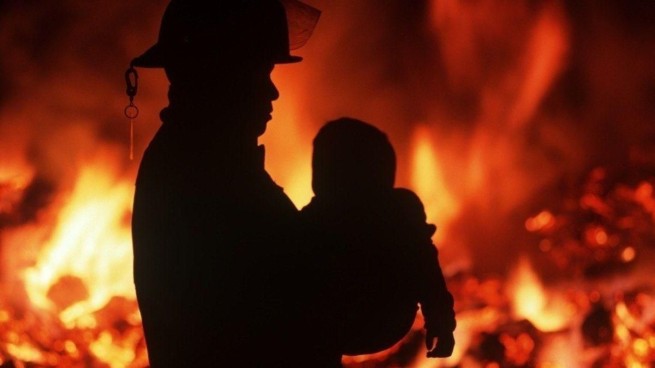Forest fires pose a variety of consequences and risks to public health, including increased morbidity and mortality.
One of the many impacts of climate change is the increase in the frequency and therefore the impact of wildfires around the world. The purpose of the publication “The Impact of Wildfires on Mental Health: A Preview” by the University of Alberta Psychiatric Hospital in Canada is to summarize the results of 254 relevant studies on post-traumatic stress, depression and anxiety disorder.
Results summarized by pathologist Teodora Psaltopoulou, professor of epidemiology and preventive medicine at the Therapeutic Clinic of the Faculty of Medicine Athens National and Kapodistrian University, show an increase in the percentage of these diseases from the immediate period of the fire to several years later.
Higher temperatures, longer summers and heat waves are all impacts of climate change and factors contributing to an increase in the frequency of forest fires.
According to experts, fires destroy homes and workplaces, and affect numerous diseases such as chronic obstructive pulmonary disease (COPD), asthma, hypertension, and diabetes.
The impact of wildfires on the mental health of survivors has been found in both adults and children. At the same time, minors are more likely to suffer from post-traumatic stress disorder and anxiety disorders. Changes in children’s behavior may include increased irritability and changes in concentration, sleep, and academic performance.
Fire exposure can be widespread. There is evidence of ongoing mental health effects identified in studies conducted 10–20 years after the fire.
1. Post-traumatic stress disorder. In the adult population after 6 months. after the fire, the prevalence of post-traumatic stress ranged from 12 to 26%. Bryant and colleagues concluded that between 3 and 10 years after the fire, the incidence of fire-related post-traumatic stress decreased from 16% to 8%. In children, indicators of post-fire psychopathology were also studied. In the subacute phase after a fire, the number of children with severe symptoms of post-traumatic stress can reach 92%. Studies that have assessed the incidence of possible distress 6 months after a fire have shown similar results in 9-12% of children and adolescents suffering from moderate to severe post-traumatic stress disorder.
Factors that are important in increasing the risk of post-fire stress include personal observation of the loss of a loved one, loss of home, fear for the life or lives of loved ones, significant material damage or a feeling of lack of support from family, friends and / or the state. For the children, the most powerful experience that caused emotional stress was the fear for the life of their parents, even more so than the fear for their own life.

2. Depression. After post-traumatic stress disorder, major depressive disorder is one of the most common mental illnesses studied and controlled after natural disasters. Adults have also been shown to have higher levels of depression and related symptoms after a fire, which can persist for up to 10 years. Studies have shown that among the adult population, the depression rate approximately 3 months after a fire is between 25 and 33%. At 6 months after the fire, the estimated incidence of major depressive disorder is 10% to 17%.
Rates of post-fire depression in children and adolescents have also been studied. McDermott et al. were among the first researchers to study depression in children 6 months after a fire and found it to be 5%. However, a more recent study showed a higher level of depression 6 months after the fire – 20%.

3. Anxiety disorder. There are a number of studies examining levels of anxiety disorder after a fire, although the evidence is less than for post-traumatic stress and depression. Research after the fire showed higher levels of anxiety in both adults and children. Among adults interviewed 3 months after the fire, 27% met the criteria for an anxiety disorder other than panic disorder, and 17% had symptoms associated with panic disorder.
Post-fire stress in children and adolescents has also been studied, although to a lesser extent than in adults. Six months after the fire, 14% of children had symptoms suggestive of an anxiety disorder. At 18 months after the fire, 27% of the students were suspected of having anxiety, while another study found no difference in the frequency of anxiety disorders between fire-exposed and control groups.
International experience and analysis of scientific research shows that the psychological consequences of fires are important for all age groups. Therefore, effective redevelopment strategies are needed, as well as public health measures and the possibility of psychological support, to reverse these negative effects and minimize their long-term consequences.







More Stories
ProNews: The government is methodically destroying the healthcare system in order to transfer it to the private sector
May Day strikes throughout Greece, operating hours of public transport are limited to the maximum (additions are being added)
Who likes an adventure holiday?